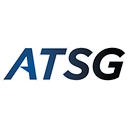Today, as businesses grapple with the ever-increasing volumes of data, the challenge of un-locking its true business value has become more pressing than ever. In order to fully capitalize from data, enterprises should adopt a more agile approach to store it. It should also be focused on making data easily accessible and usable for employees, without having to understand the specifics of any particular storage technology.
In this post, we talk about the significance, and the various types of data storage that can help businesses with their existing and future operations.
Data Storage Explained
Data storage involves the use of magnetic, optical or mechanical media for the purpose of capturing, storing and protecting digital information. The stored data can be accessed by users in a seamless manner, as and when needed. This data is typically safeguarded to ensure its integrity, confidentiality and availability.
Organizations and users require data storage to meet today’s high-level computational needs. This includes big data projects, Artificial Intelligence (AI), Machine Learning (ML) and the Internet of Things (IoT). By leveraging data storage, enterprises can save and retrieve large amounts of data, while also protecting it against loss, theft or un-authorized access.
Types of Data Storage Devices
In this section, we briefly discuss the various types of data storage devices that can be leveraged by businesses.
1. Solid-State Disk (SSD) and Flash Storage
In this type of storage, flash memory chips are used to store and write data. Here, flash memory is used to store data on SSD flash drive. Since solid-state systems have no moving parts, it results in reduced latency and needs lesser SSDs than traditional, bare metal hard drives.
2. Hybrid Storage
Compared to Hard disk drive (HDDs), SSDs and flash memory offer superior through-put, but all-flash arrays can come at a higher cost. To address this issue, many organizations opt for a hybrid approach that integrates the speed of flash with the storage capacity of hard drives. This balanced storage infrastructure allows companies to select the appropriate and cost-effective technology for their different storage requirements.
3. Cloud Storage
Cloud storage is a flexible and economical alternative to on-premise storage solutions. Here, users can store their data and files in a remote location that can be accessed through the public internet, or a dedicated private network connection. The servers and infrastructure are managed as well as maintained to ensure that users have secure access to their data at all times.
4. Hybrid Cloud Storage
Hybrid Cloud storage combines public and private Cloud components, allowing enterprises to choose where to store their data. For example, data that is heavily regulated and demands strict archiving and replication requirements is often better suited to a private Cloud environment. On the other hand, less sensitive data can be stored in the public Cloud.
5. Backup Software and Appliances
Backup storage and appliances prevent data loss from disasters, failures or malicious activities. This is done by creating periodic copies on a separate device for disaster recovery (DR) and business continuity (BC). Back-up appliances come in various forms, while backup-as-a-service (BaaS) provides a low-cost option for remote, scalable data protection.
Feel free to contact ATSG for top-notch managed IT services and intelligent technology solutions, along with highly reliable and agile Cloud Computing solutions for your enterprise.
ATSG’s cutting-edge Cloud data storage solutions provide secure, scalable and efficient storage options for businesses of all sizes. With advanced data protection measures and customizable solutions, ATSG ensures seamless integration and optimization to support the growth and success of your enterprise.
